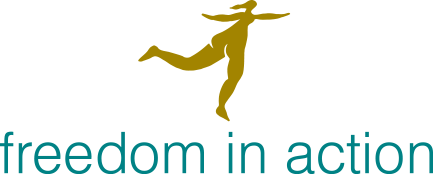
by Freedom in Action | Jul 3, 2018 | Case studies
Jackie M, a 47 year-old pharmacist, started Alexander Technique lessons hoping to reduce pain levels, especially in her neck. She had suffered from rheumatoid arthritis for 10 years. She found that she was indeed able to influence her pain levels and to be more comfortable in everyday life, as well as learning a procedure to help her when things were particularly bad. Of course, the Alexander Technique did not address the rheumatoid arthritis, but it helped Jackie to cope better. It helped Jackie to recognize where she had more power and control over her situation than she had thought. Jackie found there was scope for applying her lessons in all the activities of everyday life, with valuable pain-reducing results. Her back improved generally, particularly her neck and lower back.
An intelligent woman, Jackie had been doing her best to manage her condition, including paying attention to her posture. Like John and also Debra, her understanding of what good posture consisted of, how to achieve it and how to maintain it, were all based on a series of common but potentially dangerous misconceptions. Their Alexander Technique teachers were able to gradually correct these.

by Freedom in Action | Jul 3, 2018 | Case studies
Recent research bears out our observations. When we did a survey a few years ago about what our pupils valued the most about their Alexander lessons, the top answer was “getting out of pain” and the second answer was “knowing how to stay out of pain or get pain-free again”.
Rachel, a 38 yo mother and public servant wanted help with pain around her neck and shoulders. At her first visit, it was apparent that the level of tension in these areas in particular was very high. Rachel had limited range of movement in her head and neck, eg looking right or left. Interestingly, Rachel’s perception of the tension was very low. She just recognized the discomfort and the restricted movement. This experience has a basis in physiology; muscle receptors tend not to fire when a muscle is constantly held short.
Correcting misperceptions about key anatomical junctions (eg head/neck joint, hip joints) meant that Rachel was starting to send anatomically consistent messages to herself. With repeated and progressively more delicate hands-on guided experiences of releasing tight muscles in a coordinated way, along with sending the right messages, Rachel steadily eased and dismantled her pattern of tensing, shortening and narrowing in response to life’s daily stimuli. Underneath the old tense pattern was something closer to the ease and grace which we all tend to enjoy as children. Within about 12 lessons, Rachel had put a significant dent in her old habitual ways of moving and postural support, and was much more comfortable.

by Freedom in Action | Jul 3, 2018 | Case studies
Bob is an IT expert, 36 years old, educated and well-travelled. He has suffered from chronic pain-inducing muscular tension for about 15 years. He has tried various approaches… all to little avail.
I wondered whether he was approaching his situation from the wrong place. His approach was about what to “do” (Pilates, remedial exercises, fix his posture) or else passive (acupuncture or massage). I suggested to him that errant “doing” was actually part of the problem and that maybe there was some information that he was missing. To start with, he was unaware of his habit of tensing his neck every time he moved, something that was happening hundreds of times a day. Once it was pointed out, he was able to start to control this. (Being unaware of this particular habit can become a long-term problem resulting in having a very tense neck, and also inducing compressive tension throughout the back). Bob’s neck-tensing was part of an underlying habit of “trying”, which even extended to the way he looked at his computer screen. Bob backed off trying (to be right, to fix, to make things happen, to do, etc) and started to adopt more of the stance of an “interested observer”. Over a few short weeks, he was able to allow his neck to become freer and also to find a more economical balance for his body, relying less on muscular force (not so much holding himself up) and more on letting his bones carry his weight. Everything started to “relax”; not tense, not floppy, but still toned and ready for action. Bob was in much less pain, and also understood how he had unconsciously contributed to the pattern of pain through his habit of “trying too hard”.




Recent Comments